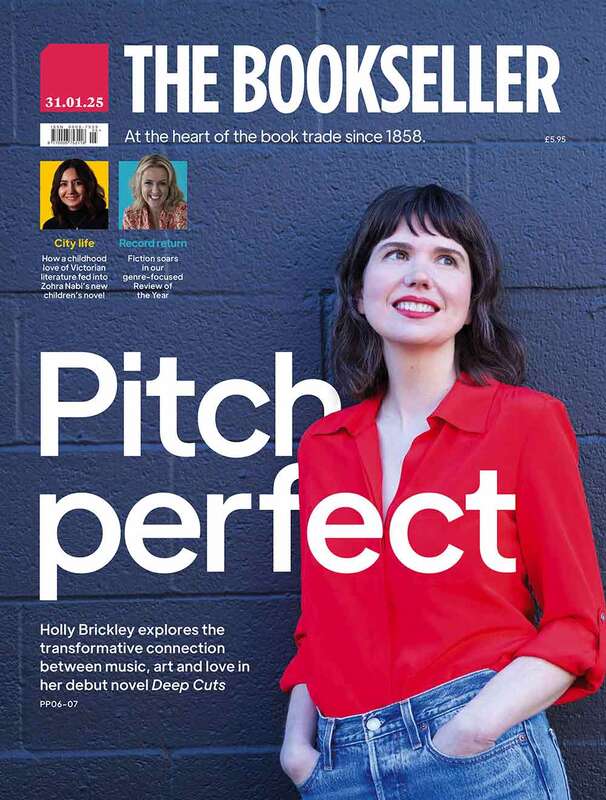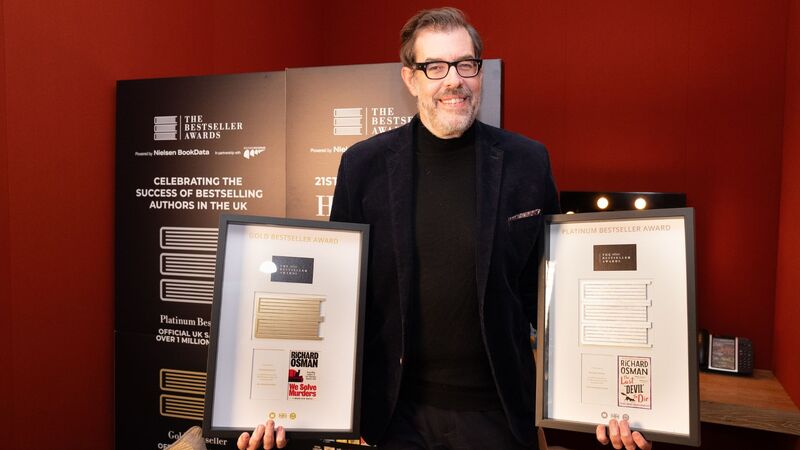You are viewing your 1 free article this month. Login to read more articles.
Records tumble as Nielsen figures claim 2021 as the most lucrative year on record
Sound the trumpets: led by standout years from Fiction and Children’s, 2021 was the biggest in value terms for the British book trade since accurate records began. Maybe.
Yes, there is a qualification as Nielsen BookScan’s formula for the market’s full-year haul of £1.82bn uses a combination of the final 42 weeks in 2021 of reportable data through its Total Consumer Market (henceforth: TCM42) and estimates of UK print sales for the first 10 lockdown weeks of 2021 from its ongoing Books and Consumers survey.

But that £1.82bn would be 3% ahead of Nielsen’s similar TCM and Books and Consumers combined estimate for 2020, and eclipses the previous official TCM high of £1.79bn in 2008. We have stated it before during the past two years but it is worth saying again: the pandemic period, at least on a top-line level, has been a bonanza for books.
Owing to restrictions on reporting for those first 10 weeks of 2021, BookScan cannot at the moment drill down more deeply from that £1.82bn figure. Thus our more granular look at the genres and categories that set the tills on fire—and ones that were damp squibs—will be based on TCM42 figures, primarily compared against the same 42-week period in 2019 (2020, of course, had even more data black spots than 2021, which makes year-on-year comparisons impractical).

However, we will make some comparisons against previous full years, as even with truncated data 2021 stacks up pretty darn well. First, the £1.52bn earned through 2021’s TCM42 is a better return for the market than seven previous TCM full-years, including that rather poor four-year run beginning in 2012, where the print market oscillated between £1.39bn and £1.51bn. If that £1.82m is accurate, around £297m of print books were sold in those first 10 weeks of 2021. The only opening 10-week period that bettered this was the £304.2m earned in 2008, when the nation was in the grips of Twilight fever, with Stephenie Meyer responsible for four of the five top-selling books.
Impressively, 23 BookScan TCM42 sub-categories in 2021 bettered all their previous full-year takes, led by Picture Books (£63.8m) and Novelty & Activity Books (£62m), which has led to a seismic change in the children’s market.
The £362.2m Fiction earned in TCM42 is a massive jump of 21% over the same period in 2019, and it beats every full-year total since 2012. Fiction’s 23.8% share of the overall market is its biggest piece of the pie in a decade. Twelve of the 14 Fiction sub-categories were in growth against the same period in 2019 and the only two that dipped did so marginally: Horror & Ghost Stories slid 2.1% to £3.8m, while Short Stories & Fiction Anthologies dropped 1% to £4.1m. Eleven Fiction genres grew by at least double digits, led by Manga’s record year of £19.3m; its 157% jump was by far the biggest leap of any BookScan category earning more than £1m (see graphic novels analysis).
Romance & Sagas (R&S) was another standout, up 41.6% to £29.1m, which is its second-biggest return ever—only the Fifty Shades year of 2012 betters it (by some distance, though, as R&S generated £68.2m that year). Social media had something to do with this as Colleen Hoover’s It Ends with Us (S&S) surfed the TikTok wave to shift £1.3m, easily topping the R&S pile. But there was an across-the-board surge: in 2019 only 40 R&S titles earned more than £100,000, while none eclipsed £750,000. In 2021, 63 sold more than six figures, while Hoover’s book and the late Lucinda Riley’s The Missing Sister (Macmillan, £841,000) were above £750,000.
 Science Fiction & Fantasy (SFF) was up by a third, with its TCM42 of £32.3m better than any full-year haul since 2013. Like R&S, SFF is a very TikTokable genre and thus we saw a marked surge from those authors who are in the adult/Young Adult crossover space, with big years from Jay Kristoff, Sarah J Maas and Samantha Shannon. But a grand master ruled them all, as Frank Herbert’s Dune topped the SFF chart 56 years after it was first published, thanks to Denis Villeneuve’s film adaptation. Interestingly, the rights for the first title in the series are split across Hachette, with the Hodder paperback version outselling two Gollancz tie-ins by 98,000 copies to 18,000. All told, Herbert earned £2.5m last year, after averaging annual sales of £175,000 in the previous 10 years.
Science Fiction & Fantasy (SFF) was up by a third, with its TCM42 of £32.3m better than any full-year haul since 2013. Like R&S, SFF is a very TikTokable genre and thus we saw a marked surge from those authors who are in the adult/Young Adult crossover space, with big years from Jay Kristoff, Sarah J Maas and Samantha Shannon. But a grand master ruled them all, as Frank Herbert’s Dune topped the SFF chart 56 years after it was first published, thanks to Denis Villeneuve’s film adaptation. Interestingly, the rights for the first title in the series are split across Hachette, with the Hodder paperback version outselling two Gollancz tie-ins by 98,000 copies to 18,000. All told, Herbert earned £2.5m last year, after averaging annual sales of £175,000 in the previous 10 years.
We will tackle Children’s more forensically over the following pages, but its TCM42 jump of 15% signals another robust year in what is an ongoing golden age. The £372.4m from its truncated 2021 represents a fifth-best all-time TCM taking. If we had full-year totals, Children’s would have unquestionably exceeded £400m for the first time—and maybe a lot more. If its market share for the first 10 weeks of last year was on par with the rest of 2021—although the first quarter tends to be heavier in non-fiction—then the sector would have turned over around £445m.
By far the market’s biggest category, Non-Fiction: Trade (NF:T), rose nearly 3% to £662.6m. That figure is below the TCM42’s overall jump of 9.2%, but we are missing the raft of “New Year, new you” sales that tend to dominate the beginning of most years. Celebs were back, with hits from the likes of Bob Mortimer, Miriam Margolyes and Billy Connolly propelling Autobiography: The Arts to £38.7m, topping every full-year return since 2010. Food & Drink: General was NF:T’s biggest earner at £46.1m and rose 45% on 2019, led by Jane Dunn’s Jane’s Patisserie (Ebury), which shifted £2.2m.
Non-Fiction: Specialist—home to most academic and professional categories—dropped 1% on 2019 to £121.8m. Perhaps unsurprisingly, given the times we live in and the rhetoric on social media, Gender Studies had a record year, up 129% (albeit to just £1.5m), led by Shon Faye’s The Transgender Issue (Allen Lane), which earned a fifth of the category’s sales.
















